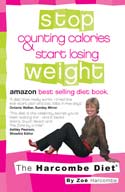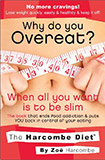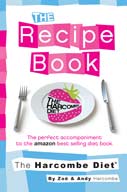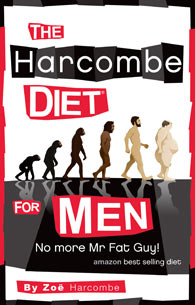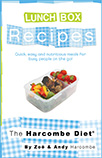As a simple rule, if you don’t know what an ingredient is, you are better off not putting it into your body!
The most fundamental principle of The Harcombe Diet is to only eat real food. That is food in the form that nature intends us to eat it: oranges grow on trees – cartons of orange juice don’t; fish swim in the sea – fish fingers don’t; baked potatoes come out of the ground – chips don’t. You get the idea.
Even in Phase 3, when we can eat what we want, we should still go for the fewest ingredients possible in each product. E.g. if you have crisps/potato chips in Phase 3, you can get packets with just potatoes and vegetable oil (usually sunflower oil) as the only two ingredients (e.g. Kettle Chips). Haagen-Dazs® vanilla ice-cream has (in order) fresh cream, skimmed milk, sugar, egg yolk and natural vanilla flavouring.
If you want to know about the substances you see on the packaging for processed foods, here is some more information. Please feel free to do other research on the internet – there are some great web sites out there and some people specialise in knowing just about one ingredient (e.g. MSG or Aspartame) so they can give you much more information than my summary below:
Some substances can be found in more than one category, as they perform more than one function within food processing. E.g. Modified starch is a food additive used as a thickening agent, stabiliser and/or emulsifier. It is commonly found in gravy granules and commercial pizza toppings.
Colour Additives
These are used to replace any natural colour lost during the processing or storage of food. Colour additives are also used to make products a consistent colour or just the colour that the food manufacturers think will appeal to you. Or just ‘for fun’ (ha, ha) e.g. blue Smarties ®.
| WHERE YOU MAY FIND THEM | WHAT YOU MAY SEE ON THE LABEL |
| Sweets, snack foods, margarine, cheese, soft drinks, jams/jellies, gelatines, packaged & frozen desserts, pie fillings | Caramel (E150a), which is used in products such as gravy and soft drinks.
Curcumin (E100), a yellow colour extracted from turmeric roots. Sunset Yellow (E110) *, Quinoline yellow (E104) *, Carmoisine (E122) *, Allura red (E129) *, Tartrazine (E102) *, Ponceau 4R (E124)* The UK Food Standards Agency reports that “Certain combinations of the following artificial food colours”… (the ones with a * above) …”have been linked to a negative effect on children’s behaviour.” They give sound advice to parents to avoid this if their child shows signs of hyperactivity. You may also see the following on labels: Beta-carotene (can be obtained from beetroot or can be made synthetically); Grape skin extract; Cochineal extract or carmine (these are made from crushed insects, so are generally avoided by vegetarians); Fruit and vegetable juices. |
Emulsifiers
An emulsifier is a substance added in food production to prevent the oil and water in the product from separating into two layers. The most commonly used emulsifiers are lecithin (E322) and the mono- and di-glycerides of fatty acids (E471). There are, however, many other emulsifiers in use.
| WHERE YOU MAY FIND THEM | WHAT YOU MAY SEE ON THE LABEL |
| Bread, bagels, cookies, muffins, cakes, pies, pasta mixes, crisps, cereals, cereal bars, margarine, spreads, packaged & frozen desserts, ice-cream, chewing gum, coffee whiteners, salad dressings, peanut butter, chocolate | Lecithin (E322), Soy lecithin,
Mono- and diglycerides (E471), Egg yolks, Polysorbates, Sorbitan monostearate |
More on: Mono-diglycerides. Almost all fat comes in the form of triglycerides. If you take a batch of triglycerides, which have three (hence the “tri-”) fatty acids attached to a glycerol molecule, and mix them with the right chemicals, some of those fatty acid chains will detach from their glycerol molecule, resulting in mono- and diglycerides. A mono (one) glyceride has one fatty acid attached to a glycerol molecule while a di (two) glyceride has two fatty acids attached to a glycerol molecule.
The jury is out as to whether or not these are hydrogenated oils. Some web sites state that they categorically are and some are not sure. Some people have noticed that products that used to declare “trans fats” now list “mono or diglycerides” on the label instead. I don’t know enough about trans fats to give a view, but I do know that I have no intention of putting these glycerides – mono, di, or whatever – into my body!
Humectants
A humectant is a substance used primarily in foods (and cosmetics) to help retain moisture. A common humectant is sorbitol – a sweetener that can have a laxative effect in more than small quantities.
| WHERE YOU MAY FIND THEM | WHAT YOU MAY SEE ON THE LABEL |
| Shredded coconut, marshmallows, soft candies, confectionery |
Glycerol (also known as Glycerine) (E422), Sorbitol |
More on Glycerol/Glycerine: Glycerol is a colourless, odourless, viscous liquid, which is sweet to taste. It is made from fats by alkaline hydrolysis. In food and drinks glycerol acts as a humectant, solvent and sweetener and may help preserve foods. It is used as a filler in low fat foods, like reduced fat biscuits and it is used as a sugar substitute. Another substance I’m sure my body can do happily without!
Sugars & Sweeteners
Sugars & Sweeteners are used to add sweetness to products with or without adding calories. If we regularly consume artificially, or unnaturally, sweetened products, our taste buds adjust so that we no longer find nature’s own sweet foods (cherry tomatoes, bananas etc) ‘sweet enough’.
| WHERE YOU MAY FIND THEM | WHAT YOU MAY SEE ON THE LABEL |
| Absolutely anywhere! Confectionery, bread, cereals, packaged & frozen desserts, biscuits, cakes, microwave meals, diet drinks, crisps & snacks etc | Ones with calories: Sucrose (sugar), Glucose, Fructose, Sorbitol, Mannitol, Corn syrup, High fructose corn syrup.
Ones (effectively) without calories – as they are used in such small quantities: |
Relative sweetness of sugars and sweeteners – where table sugar (sucrose) = 100
| SUBSTANCE | RELATIVE SWEETNESS | CALORIES PER OZ |
| Lactose | 16 | 113 |
| Maltose | 32.5 | 110 |
| Invert Sugar | 50 | Not found |
| Glucose | 74.3 | 110 |
| Honey | 97 | 86-110 (this varied quite widely in data) |
| Sucrose (Sugar) | 100 | 110 |
| Fructose | 173 | 104 |
| Aspartame (sweetener) | 16,000-22,000! | 113, but effectively 0 for amounts used |
| Acesulfame-K (sweetener) | 20,000 | Effectively 0 |
| Saccharin (sweetener) | 30,000 | Effectively 0 |
| Sucralose (sweetener) | 40,000-80,000!! | Effectively 0 |
Here are a couple of the new sweeteners, which the food industry is trying to convince us are natural. Natural my foot!
Agave nectar: This is a new sweetener – it looks like the food industry will continue to develop ‘new’ sweeteners so that, just as we catch up on just how evil one is (e.g. Aspartame), they have moved on to the next one. Just don’t eat sweeteners is the basic rule – they are not natural and just fuel the desire for sweet things. We are trying to re-educate taste buds to love real food again – not to obliterate them with artificial sweetness all the time. Check out this great fact sheet on Agave nectar.
Xylitol: Another junk sweetener – check out the low down on this one.
Trans Fats
According to the U.S. Food and Drug Administration’s website: “Consumers can know if a food contains trans fat by looking at the ingredient list on the food label. If the ingredient list includes the words “shortening,” “partially hydrogenated vegetable oil” or “hydrogenated vegetable oil,” the food contains trans fat. Because ingredients are listed in descending order of predominance, smaller amounts are present when the ingredient is close to the end of the list.”
Cholesterol lowering products are bad enough, (don’t lower life vital cholesterol!) but many margarines and spreads claiming to lower cholesterol contain hydrogenated oils. If you want to know any more about why you should avoid trans fats, check out www.bantransfats.com.
Additives specific to bread and baked goods
Breads and other baked goods can contain the following:
| THE PRODUCTS AND WHAT THEY DO | WHAT YOU MAY SEE ON THE LABEL |
| Raising Agents: To make the baked goods ‘rise’ | Baking soda, monocalcium phosphate, calcium carbonate, sodium bicarbonate |
| Yeast Nutrients: To promote growth of yeast (Candida sufferers beware!) | Calcium sulfate, ammonium phosphate |
| Dough Strengtheners & Conditioners: To produce more stable dough | Ammonium sulfate, azodi-carbonamide, L-cysteine |
Vitamins & Minerals
A number of vitamins and minerals are added to processed foods – especially breakfast cereals and cereal bars. My advice would be to skip the sugary cereals and bars and have 100% porridge oats and skimmed milk for breakfast instead, with all the natural nutrients therein. You may like to take a good multi vitamin and mineral tablet daily ‘as an insurance policy’. No one can be confident that they are getting all the vitamin D or Calcium that they need in their diet, as an example. A good supplement can give you that reassurance.
| WHERE YOU MAY FIND THEM | WHAT YOU MAY SEE ON THE LABEL |
| Flour, breads, cereals, margarine, milk, fruit juices, energy bars, instant breakfast drinks, rice (*), pasta (*)(*) In the UK, these products rarely have added nutrients | Thiamine hydrochloride, Riboflavin (Vitamin B2), Niacin, Niacinamide, Folate or Folic acid, Beta carotene, Potassium iodide, Iron or ferrous sulfate, Alpha tocopherols, Ascorbic acid (Vitamin C), Vitamin D, Amino acids (L-tryptophan, L-lysine, L-leucine, L-methionine) |
Stabilisers and Thickeners
Stabilisers literally stabilise the product (otherwise it would be unstable!) Um, not sure I want to consume this kind of substance either unstable or with stabilisers! Thickeners literally thicken – so a watery substance can become thicker and less watery. Food manufacturers add these to produce a uniform texture and to improve “mouth-feel”. I.e. to disguise how the substance would actually taste without these.
| WHERE YOU MAY FIND THEM | WHAT YOU MAY SEE ON THE LABEL |
| Packaged & frozen desserts, dairy products, cakes, pudding and gelatine mixes, dressings, jams and jellies, sauces | Gelatine (non veggie – made from crushed insides of animals), pectin, guar gum, carrageenan, xanthan gum, whey, modified starch |
More on Modified Starch: Modified starch is a food additive used as a thickening agent, stabiliser or emulsifier. It is commonly found in gravy granules and commercial pizza toppings.
Fat Replacers (and components of formulations used to replace fats)
The reason given for adding these substances is that they provide “expected texture and a creamy “mouth-feel” in reduced-fat foods”.
| WHERE YOU MAY FIND THEM | WHAT YOU MAY SEE ON THE LABEL |
| Baked goods, dressings, packaged & frozen desserts, confectionery, cake and dessert mixes, dairy products | Olestra, Cellulose gel, Carrageenan, Polydextrose, Modified food starch, Micro-particulated egg white protein, Guar gum, Xanthan gum, Whey protein concentrate |
Flavour Enhancers
These enhance flavours already present in foods (without providing their own separate flavour).
| WHERE YOU MAY FIND THEM | WHAT YOU MAY SEE ON THE LABEL |
| MSG alone is in so many foods. See the following if you are interested in a view about the role MSG plays in obesity www.rense.com/general52/msg.htm
MSG (or Hydrolysed Vegetable Protein, which is essentially the same thing) can be found in soup, crisps, gravy, microwave meals, salad dressings and in so many fast-food products from Burger King, McDonalds, Wendy’s, Taco Bell, TGIF and Kentucky Fried Chicken |
Monosodium glutamate (MSG), Hydrolysed soy or vegetable protein, Autolysed yeast extract, Disodium guanylate or inosinate |
Preservatives
These substances literally preserve food (from bacteria, moulds, fungi or yeasts) from going off or from changing colour, flavour, or texture, maintain freshness.
| WHERE YOU MAY FIND THEM | WHAT YOU MAY SEE ON THE LABEL |
| Fruit sauces & jellies, drinks, baked goods, cured meats, oils and margarines, cereals, dressings, snack foods, fruits and vegetables | Ascorbic acid, Citric acid, Sodium benzoate, Calcium propionate, Sodium erythorbate, Sodium nitrite, Calcium sorbate, Potassium sorbate, BHA, BHT, EDTA, tocopherols (Vitamin E) |
Other substances found on labels:
| Anhydrous milk fat | Anhydrous milk fat is made by removing virtually all of the moisture and non fat solids from pasteurised cream. The 40% milk fat cream is first concentrated to 70% to 80% milk fat, and then the high-fat cream is processed through a specialised phase inversion unit or separator. The milk fat is further concentrated, with residual moisture removed by vacuum-drying. Anhydrous milk fat contains no less than 99.8% milk fat and not more than 0.10% moisture. |
| Buttermilk | This used to be a by-product of making butter – after all the churning there would be butter and liquid and this liquid was called buttermilk. We don’t do the old fashion churning nowadays so the buttermilk we see in a supermarket, or in other products (e.g. margarines) is made by adding a lactic acid bacteria culture to skimmed milk. The milk is then fermented to make modern buttermilk. It might be more appropriate to call it ‘butterless’ milk, as it is in fact milk with the butter removed. An example I came across on the web was 90% water, 5% lactose sugar, live bacteria culture and a tiny bit of butter fat. What should you eat instead? Butter! |
| Maltodextrin | Dextrins are a group of carbohydrates produced by the hydrolysis of starch. Maltodextrin is a short chained (simple) starch sugar, which is used as a food additive. It is absorbed as rapidly as glucose (not good for blood sugar). It can be found as a sweetener in powdered drinks and as a thickening agent in sauces and salad dressings. |
That’s it for now – hopefully this has convinced you that the following is good advice:
As a simple rule, if you don’t know what an ingredient is, you are better off not putting it into your body!



